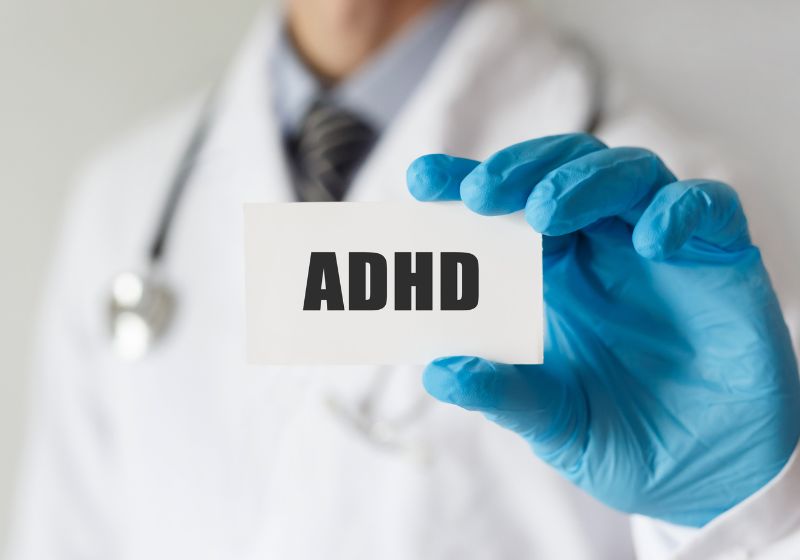Attention Deficit Hyperactivity Disorder (ADHD) stands as a prominent neurodevelopmental condition marked by distinct features of inattention, hyperactivity, and impulsivity. The primary approach to managing ADHD predominantly involves the use of stimulant medications, offering relief from its symptoms. However, this therapeutic avenue is not without its complexities. It has been observed that stimulant medications, while efficacious in addressing ADHD symptoms, may also exert an influence on blood pressure levels.
In this context, the emergence of hypertension, commonly known as high blood pressure, becomes a noteworthy concern. Given that hypertension is a recognized risk factor for cardiovascular diseases, it underscores the critical importance of diligent blood pressure monitoring for individuals who rely on ADHD medications. This convergence of neurodevelopmental care and cardiovascular health highlights the multifaceted nature of managing ADHD and the need for a holistic approach to address potential complications.
Contents
Understanding the Link Between ADHD Medications and Hypertension
Stimulant medications, including well-known variants such as methylphenidate and amphetamine, constitute the cornerstone of ADHD management. These medications function by modulating neurotransmitters, particularly dopamine and norepinephrine, within the brain. The mechanism of action involves enhancing the levels of these neurotransmitters, thereby exerting a beneficial impact on attention, hyperactivity, and impulsivity—the core symptoms of ADHD.
Methylphenidate, for instance, operates by blocking the reuptake of both dopamine and norepinephrine. By inhibiting the reuptake process, the medication essentially enhances the availability of these neurotransmitters in the synaptic cleft, promoting improved neurotransmission. Similarly, amphetamine-based medications function by stimulating the release of dopamine and norepinephrine from nerve endings, further augmenting their presence in the brain.
While these mechanisms are instrumental in alleviating ADHD symptoms, they can inadvertently affect other physiological systems. Notably, the alteration of dopamine and norepinephrine levels brought about by stimulant medications can influence cardiovascular function, potentially leading to changes in blood pressure.
Understanding this intricate interplay between ADHD medications and blood pressure regulation is pivotal for healthcare providers and patients alike. It highlights the importance of close monitoring and underscores the need for a comprehensive approach to ADHD treatment. By elucidating this link, healthcare professionals can make informed decisions regarding medication management, striving to balance the therapeutic benefits of ADHD medications with potential cardiovascular risks, thereby ensuring the well-being of individuals managing this complex neurodevelopmental disorder.
Monitoring Blood Pressure: A Critical Aspect of ADHD Treatment
When it comes to ADHD treatment, vigilant and routine blood pressure monitoring assumes a position of paramount importance. This practice stands as a critical safeguard for individuals who rely on ADHD medications, particularly stimulants like methylphenidate and amphetamine.
The necessity for regular blood pressure monitoring stems from the potential influence of these medications on cardiovascular function. Stimulant medications operate by altering the levels of neurotransmitters, notably dopamine and norepinephrine, in the brain. While this mechanism effectively addresses the core symptoms of ADHD, it can inadvertently impact blood pressure regulation.
Hypertension, or high blood pressure, is a recognized risk associated with the use of ADHD medications. The alterations in neurotransmitter levels brought about by these medications can lead to changes in vascular tone and heart rate, ultimately affecting blood pressure levels. This underscores the need for healthcare providers to remain vigilant and proactive in monitoring their patient’s cardiovascular health.
Regular blood pressure checks offer several key benefits. Firstly, they enable the early detection of any hypertension-related issues that may arise during the course of ADHD medication therapy. Early intervention can help mitigate potential risks and complications associated with elevated blood pressure.
Furthermore, consistent blood pressure monitoring empowers healthcare providers to make informed decisions about medication dosages and management. It allows for a personalized approach to ADHD treatment, ensuring that the therapeutic benefits of the medication are maximized while minimizing potential cardiovascular risks.
Overall, the integration of blood pressure monitoring as a routine aspect of ADHD treatment reflects a holistic and patient-centered approach to healthcare. It acknowledges the interconnected nature of neurodevelopmental care and cardiovascular health, placing the well-being and safety of individuals with ADHD at the forefront. Through this vigilant monitoring, healthcare providers can navigate the complex landscape of ADHD treatment with precision, optimizing outcomes and ensuring the overall health of their patients.
Managing Hypertension while Effectively Treating ADHD
Effective management of hypertension while simultaneously addressing ADHD necessitates a synergistic and collaborative effort involving healthcare providers, patients, and their families. This holistic approach is pivotal in ensuring the well-being and therapeutic success of individuals navigating both conditions.
The cornerstone of this collaborative effort lies in open and transparent communication. Healthcare providers must engage in candid discussions with patients and their families to thoroughly comprehend the individual’s medical history, ADHD symptoms, and potential risk factors for hypertension. This lays the foundation for informed decision-making regarding treatment options and medication choices.
Tailoring ADHD medication regimens to the unique needs and health profile of the patient becomes paramount. This may involve careful selection of ADHD medications or dosage adjustments to mitigate potential cardiovascular risks, all while maintaining optimal symptom control.
Simultaneously, lifestyle modifications play a crucial role. Patients and their families must actively participate in fostering a heart-healthy lifestyle. This includes promoting a balanced diet, regular physical activity, and stress management techniques. These measures contribute not only to better cardiovascular health but also complement the management of ADHD symptoms.
Regular and consistent monitoring of blood pressure is non-negotiable. Healthcare providers should schedule routine check-ups to assess blood pressure levels and address any concerns promptly. Additionally, educating patients and their families about the importance of home blood pressure monitoring empowers them to take an active role in their healthcare journey.
Finally, ongoing dialogue between all parties involved is essential. Adjustments to the treatment plan may be necessary based on the patient’s response to medications and any changes in blood pressure readings. This continuous collaboration ensures that both ADHD and hypertension are effectively managed while safeguarding the patient’s overall health and quality of life.
Conclusion
The need for routine blood pressure monitoring stands out in the complex environment of managing ADHD drug risks and possible hypertension. People managing ADHD and cardiovascular health may benefit from this all-encompassing strategy, which is based on open dialogue, teamwork, and constant monitoring.
Healthcare practitioners and patients may work together to achieve a delicate balance by encouraging open conversation, customizing treatment regimens, adopting heart-healthy habits, and diligently monitoring. Striking this equilibrium improves the health and quality of life of those dealing with ADHD while simultaneously reducing the risk of cardiovascular complications.






